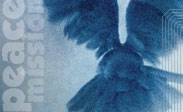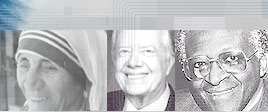


   |
|
BETTY WILLIAMS
Year: 1976 Nobel Peace Prize Cause: Founder of the Northern Ireland Peace Movement About In 1976, along with Mairead Maguire, Betty Williams was awarded the Nobel Peace Prize for her work against violence in her native Northern Ireland. Together, Williams and Maguire founded the Community of Peace People, an organization which is still involved in the betterment of life in Northern Ireland. But, as Williams herself has said many times, the Nobel Peace Prize is not awarded for what one has done but for what one will do.She serves on the Council of Honor for the United Nations University for Peace in Costa Rica and is a Patron for the International Peace Foundation in Vienna. Since then, she has been honored with the People’s Peace Prize of Norway, the Schweitzer Medallion for Courage, the Martin Luther King, Jr. Award, the Eleanor Roosevelt Award and the Frank Foundation Child Care International Oliver Award. In 1992, Governor Ann Richards of Texas appointed Betty to the Texas Commission for Children and Youth. In 1995, she was awarded the Rotary Club International “Paul Harris Fellowship” and the Together for Peace Foundation Peace Building Award. Williams serves currently as President of World Centers of Compassion for Children. She is also Chair of The Institute for Asian Democracy in Washington, DC and a Distinguished Visiting Professor at Nova Southeastern University. Related Links |